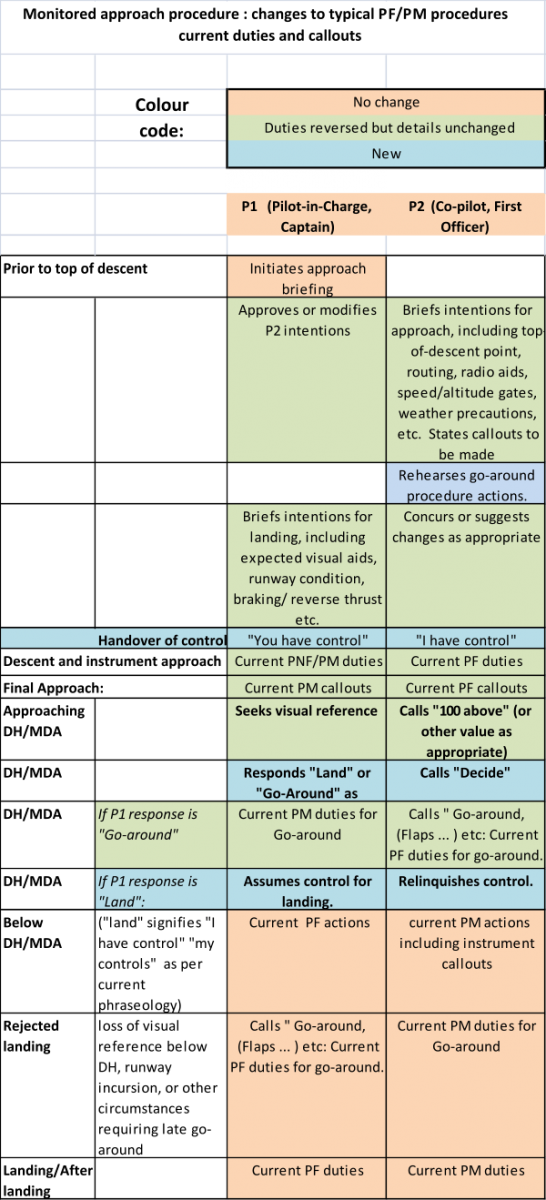To use PicMA procedures, the changes to most operators' current documents and approved procedures are minimal. Most operators procedures specify the duties and callouts for operation in IMC, with optional aspects for visual conditions. This is unchanged by using PicMA.
The table below illustrates the new items, current elements that are re-allocated, and those that continue to be used. Duties are allocated to "P1" and "P2" to accomodate role reversal (F/O sectors, "leg and leg flying", etc.) which are discussed in the subsequent "best practice" example.
The following callouts etc. would apply as the standard procedure for all instrument approaches. Minor differences could occur between approaches planned to terminate in an automatic rather than a manual landing, or for operations conducted under visual flight rules. These would accomodate for example Cat 3 approaches using an Alert Height rather than Decision Height.
The majority of detail procedures and call-outs remain the same. Little additional training is needed for these as both pilots are trained to achieve them anyway: the only change is to which pilot is assigned to perform them on an individual occasion. For many operators there are fewer call-outs since the PM/co-pilot is not expected to make "sighting" calls.

Use in actual good weather.
The intention of using PicMA as the standard procedure for all approaches is to ensure that the normal way of operating contains as much defence as possible against any problem the crew might encounter.
The objective is not to "minimise the time that the P1 is handling the aircraft". It is to MAXIMISE the probability that he or she will obtain the necessary external visual references for a safe landing following a stabilised approach.
Once the stable approach "gate" conditions have been achieved AND the P1 has good visual reference, there is no particular reason why he or she should not take control, other than continuing the PicMA to a lower altitude for practice for worse conditions. So if the operator's stabilised approach criteria happen to be set for a 1000ft a.a.l. "gate", at any subsequent point when the aircraft is in visual meteorological conditions, the P1 can simply declare e.g. "stable, visual, my controls".
This provides a clear and unambiguous affirmation by the P1 to all crew members that all the approach criteria have been successfully met. The P2 then assumes the PM duties, with particular emphasis on maintaining instrument monitoring and other normal callouts through to touchdown.
